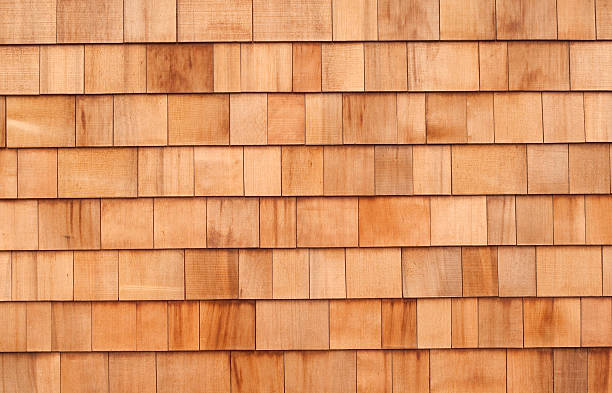
Choosing Wood Siding: How to Decide on a Wood Siding Pattern
In the world of home design, very few things can rival the timeless charm and natural beauty of wood siding. Whether you’re renovating an old house or building a brand-new one, the choice of wood siding can profoundly impact your home’s overall aesthetics. But with many wood species, colors, and patterns to choose from, how do you navigate the options and find the perfect wood siding pattern? In this article, we will unravel the secrets of selecting the ideal wood siding pattern.
So, let’s start our discovery process to uncover the key factors that can help you make informed decisions for your dream home.
Things to Consider When Choosing a Wood Pattern
- First and foremost, does the pattern align with your design style? Selecting a pattern that will continue to captivate and delight you day after day is crucial.
- Think about how you want your home to fit in with its surroundings. Consider whether it should complement neighboring houses or adhere to homeowner association (HOA) requirements.
- Vertical or horizontal installation is another factor to consider. The trend of multi-directional installs is gaining popularity because they introduce captivating visual textures to your home. Determine if you want to join the trend.
- Cost differences between patterns should also be taken into account. Some patterns may require more milling, resulting in higher costs. Moreover, installation expenses can vary depending on the complexity and intricacy of the chosen pattern.
- Take the time to photograph homes with wood siding that catches your eye. These images can serve as valuable references as you explore your options.
- Lastly, don’t hesitate to seek guidance from professionals in the industry. They possess invaluable knowledge and experience to assist you throughout your wood-siding journey.
Different Types of Wood Siding Patterns and Profiles to Choose From
The next step in deciding on a wood siding pattern is familiarizing the available options. When you are familiar with the options, deciding will be easier.
Dutch Lap
Dutch Lap, also called Cove Lap or German Lap, is a captivating variation of Lap Siding that originated in the 1800s. Its defining feature is the curved channel between the installed boards. This curved channel adds a touch of elegance to its overall appearance. Typically milled with a rough exposure and knotty grade, Dutch Lap exudes a charming rustic character that enhances the beauty of any home.
Tongue and Groove
Tongue and Groove, commonly known as T&G, is a timeless wood siding pattern suitable for various architectural styles. From contemporary to rustic, this wood siding pattern fits into almost everything. This versatile pattern offers several profiles, including V-groove, Fine Line, and Flush Joint, each with subtle variations in appearance.
Whether you install the T&G horizontally, vertically, or diagonally, the wood siding patterns provide endless possibilities for a custom look. Its uniform installation is facilitated by the tongue and groove feature on each milled plank. This is why it is a popular choice among homeowners.
Channel Lap
Channel Lap is a distinctive variation of Lap Siding. It features a wide channel between its installed boards, typically around one inch. This pattern is often milled on knotty, rough-sawn cedar.
Therefore, it often adds a touch of rustic charm to any home.
Channel Lap offers the flexibility to be installed horizontally, vertically, or diagonally, providing homeowners the creative freedom to achieve their desired aesthetic. You can elevate the visual appeal of your exterior with this captivating wood siding pattern.
Shiplap Pattern
The Shiplap pattern has a rich history, originating from its use on Viking ships to create a watertight seal. Since the 1800s, this pattern has remained popular due to its functionality and aesthetic appeal.
Shiplap allows for wood’s natural expansion and contraction with changing seasons and humidity levels. Its self-spacing feature, achieved through grooves on the top and bottom of the boards, ensures efficient and consistent installation.
With profiles like Flush Joints, Nickel Gaps, and Beveled Edges, Shiplap suits various architectural styles. Thus, it is a versatile choice for both horizontal and vertical installations.
Wavy Edge Patter
The Wavy Edge pattern is greatly loved for its distinctiveness, particularly in the bevel profile. Each piece showcases a unique wavy edge that ensures no two edges are alike. With a thick bevel, this pattern creates deep shadow lines that emphasize and enhance its captivating wavy edge appearance.
Using a Wavy Edge pattern on your wood siding naturally bestows a rustic feel upon your home. It infuses your home with undeniable charm. You can choose this pattern if you want to make a statement and elevate the visual appeal of your exterior.
Bevel Pattern
The Bevel pattern is achieved by cutting a board diagonally. This results in two planks with varying thicknesses. As a result, the Bevel pattern is one of the most cost-effective siding patterns, as one board yields two planks. It is usually Installed with the thicker end at the top. This thicker end usually overlaps the thinner end of the board below.
Generally, the Bevel pattern creates a reliable water barrier, making it popular in coastal areas. In terms of profiling, there are two types of Bevel profiles: the square-butt end, known as Clapboard, and the notched-butt end, referred to as Rabbeted Bevel or Dolly Varden.
As for installation, the Bevel siding is installed horizontally. Therefore, it offers an appealing shadow line that varies based on the selected thickness. It imparts a traditional or rustic, cozy, and inviting aesthetic to your home.
Conclusion
Choosing the right wood siding pattern is a crucial decision that can transform the look and feel of your home. For expert assistance and top-quality custom-cut cedarwood products, rely on Longhouse Cedar to transform your vision into reality. Contact us at 1-800-811-2010 today and elevate your property’s curb appeal with a wood siding pattern tailored to your unique taste and requirements.
